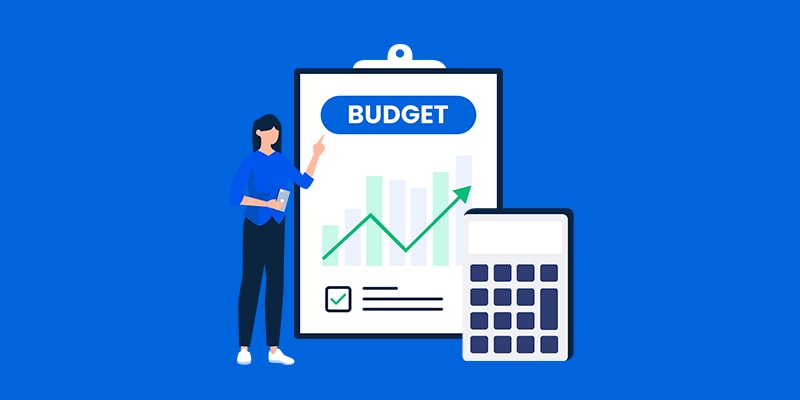
Budgeting your money to avoid debt (UK)
Budgeting is more important than ever with rising costs and inflation in the UK. Things like rent, groceries, and petrol are stretching budgets thin, and many people are finding it harder to keep up. If you’ve been feeling the pinch, this guide is here to help. We’ll show you how to create a budget that works for you and keeps you from needing to borrow money when times get tough.
Why budgeting can help you avoid debt
1. Track What You’re Spending:
Budgeting helps you figure out if you’re spending more than you earn. Once you know where your money is going, you can make better decisions and avoid relying on loans to make ends meet.
2. Set Spending Limits:
When you budget, you get a clear picture of how much you can safely spend without putting your financial security at risk.
3. Be Ready for Emergencies:
Saving a little for emergencies in your budget means you won’t need to take out loans when unexpected expenses pop up.
Easy steps to make a great budget
Step 1: Calculate your monthly income
First, you need to figure out how much money you earn from your job or through social welfare, disability benefits, or other support systems in the UK. It’s also important to determine your monthly income because it can vary throughout the year. Once you have this monthly income figure, you can move on to the next step, which involves tracking your expenses.
Step 2: Start recording your expenditures
Recording all your expenses may seem overwhelming because we rarely track our spending in detail. To simplify this process and get started, it’s best to focus on common monthly expenditures like rent, car payments, electricity, internet, TV subscriptions, and childcare. These are the typical monthly bills that may fluctuate but are recurring. Taking this step will be a significant milestone in understanding where your money goes. Afterward, you can address other expenses such as groceries, clothing, dining out, social spending and any debt you might have on credit cards etc.
Step 3: Use a budget planning sheet or app
You can make your own budget in Excel or a Google Spreadsheet, or you can use a budgeting planning template, planner or app to help you map out your budget.
Here are some excellent budget planning options:
1. Snoop.app: This app not only assists you in planning your budget but also monitors your spending. It even provides suggestions on how to save money on various utility companies you may be currently using.
2. MoneySavingExpert’s Budget Planner: This free budget planner spreadsheet is based on solid budgeting theory, accurately mapping your incomings and outgoings over a year, then helping assess whether it balances.
3. MoneyHelper’s Budget Planner: This free online budget planning tool helps you keep track of where every pound is being spent.
4. Savings4Savvymums’ Printable Budget Planners: This site offers 15 free printable budget planners that can help you save money as a family.
5. Selectra’s Best Budgeting Apps in the UK for 2022: This guide provides a list of the best budgeting apps available in the UK to help you manage your money better.
6. MyBest’s 10 Best Budget Planners UK 2023: This guide provides a list of the top 10 budget planners in the UK for 2023, including log books to track your spending and saving, and wallet-style planners to allocate a budget.
Step 4: Determine your net income
To determine your net income, subtract your expenses from your income. This includes your regular job and any extra money you make. This will give you an idea of how much money you have left after all your expenses are paid. If you find that you’re spending more than you’re earning, you’ll need to make some adjustments to avoid getting into debt.
Step 5: Identify areas of overspending
Take a close look at what you spend. Are you spending too much somewhere? Identifying areas of overspending is crucial in managing your budget. This could be anything from dining out too often to buying unnecessary items. Once you’ve identified these areas, you can start making changes to reduce your spending.
Step 6: Choose a budgeting method that works for you
Find a budgeting style that fits how you like to handle money. It could be using envelopes with cash, where you allocate a certain amount of cash for each category of your budget, or using budgeting apps that track your income and expenses. Choose a method that you’re comfortable with and that you can stick to.
Step 7: Set financial goals
Regularly check how you’re doing with your money goals. Whether it’s saving for a vacation, paying off debt, improving your credit score or building an emergency fund, having clear financial goals can help you stay on track with your budget.
Step 8: automate your finances
Make some money moves automatic. Set up your bills and savings to be paid automatically. This can help ensure that you’re paying your bills on time and saving consistently, which can help you avoid debt.
The bottom line:
Budgeting is a great way to help you avoid debt and achieve your financial goals. It may seem daunting at first, but with a bit of effort and discipline, you can create a budget that works for you. Remember, the key to successful budgeting is to be realistic, flexible, and committed to your financial health.
